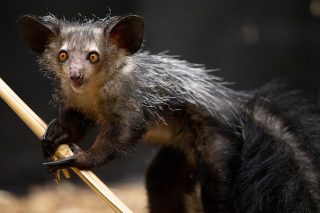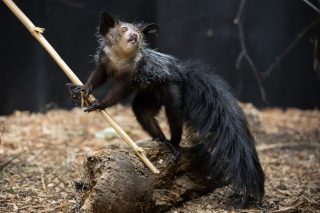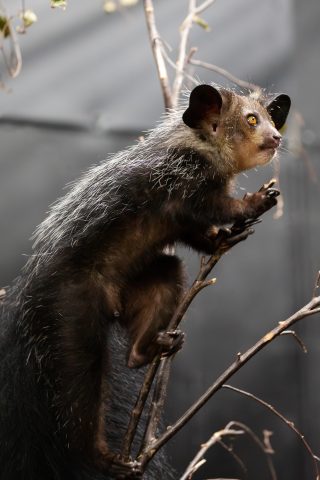Fun Facts
Nest sleepers
Aye-ayes build ball-like nests in treetops from leaves and branches, in which they curl up and sleep during the day
Grasping toes!
Aye-ayes have opposable (grasping) big toes on their feet that they use to grab onto and hang down from tree branches.
Percussive foraging
Aye-ayes locate insects by tapping on a tree branch with their long middle fingers. They then use these fingers to dig out insects. This is called percussive foraging. They also use this finger to dig the pulp out of fruit.
Mega aye-aye
An extinct form of the aye-aye (Daubentonia robusta) once lived in southwest Madagascar. It likely weighed over 11 kg, which is three to five times what the existing aye-aye species weighs. It probably co-existed with early humans.
Malagasy woodpeckers
Aye-ayes are one of the most distinctive mammals on earth due to their unusual appearance. In Madagascar they are considered to fill the ecological niche of woodpeckers which are absent from Madagascar.



